Abstract
Respiratory function was studied in three groups of workers employed in processing coffee. The prevalence of almost all chronic respiratory symptoms was significantly higher in coffee processors than in control workers. In each group during the Monday work shift there was a significant mean acute decrease in the maximum expiratory flow rate at 50% vital capacity (VC), ranging from 4.0% to 8.7%, and at 25% VC, ranging from 6.0% to 18.5%. Acute reductions in FEV1.0 were considerably lower, ranging from 1.3% to 2.8%. On Thursdays the acute ventilatory function changes were somewhat lower than on Mondays. Acute decreases in flow rates at low lung volumes suggest that the bronchoconstrictor effect of the dust acts mostly on smaller airways. Administration of Intal (disodium cromoglycate) before the shift considerably diminished acute reductions in flow rates. A comparison of Monday pre-shift values of ventilatory capacity in coffee workers with those in controls indicates that exposure to dust in green or roasted coffee processing may lead to persistent loss of pulmonary function.
Full text
PDF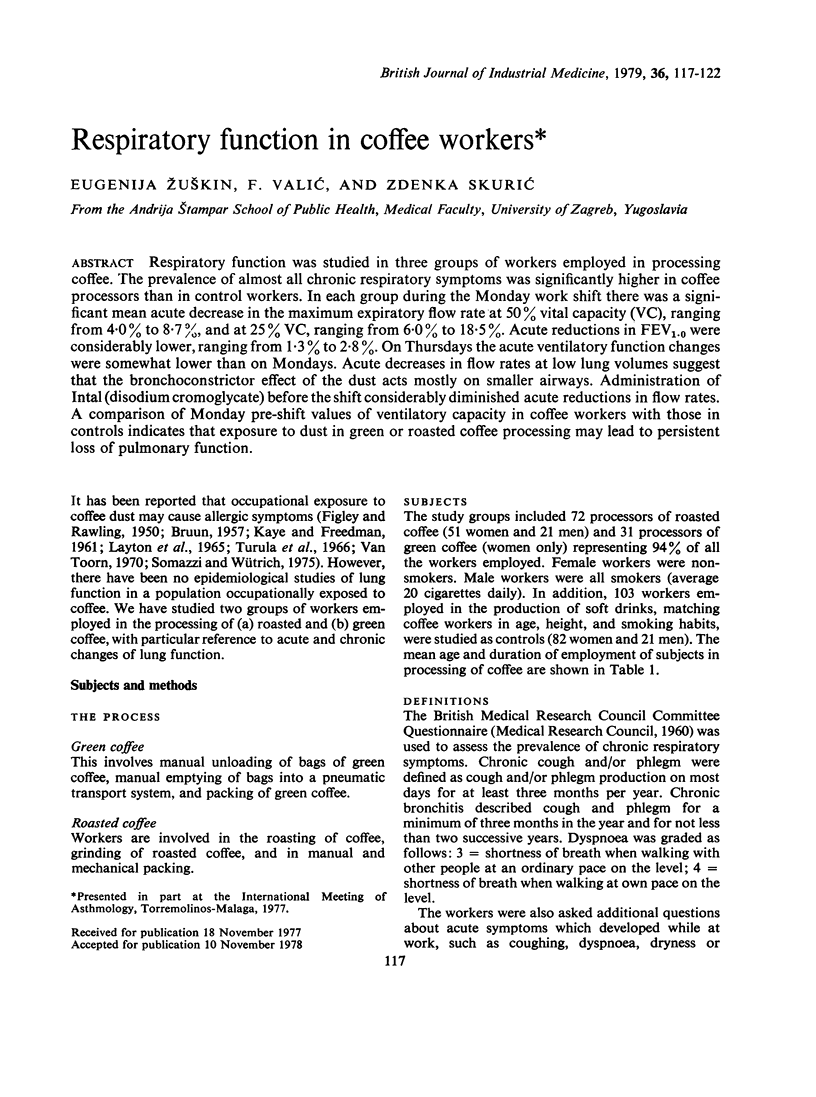
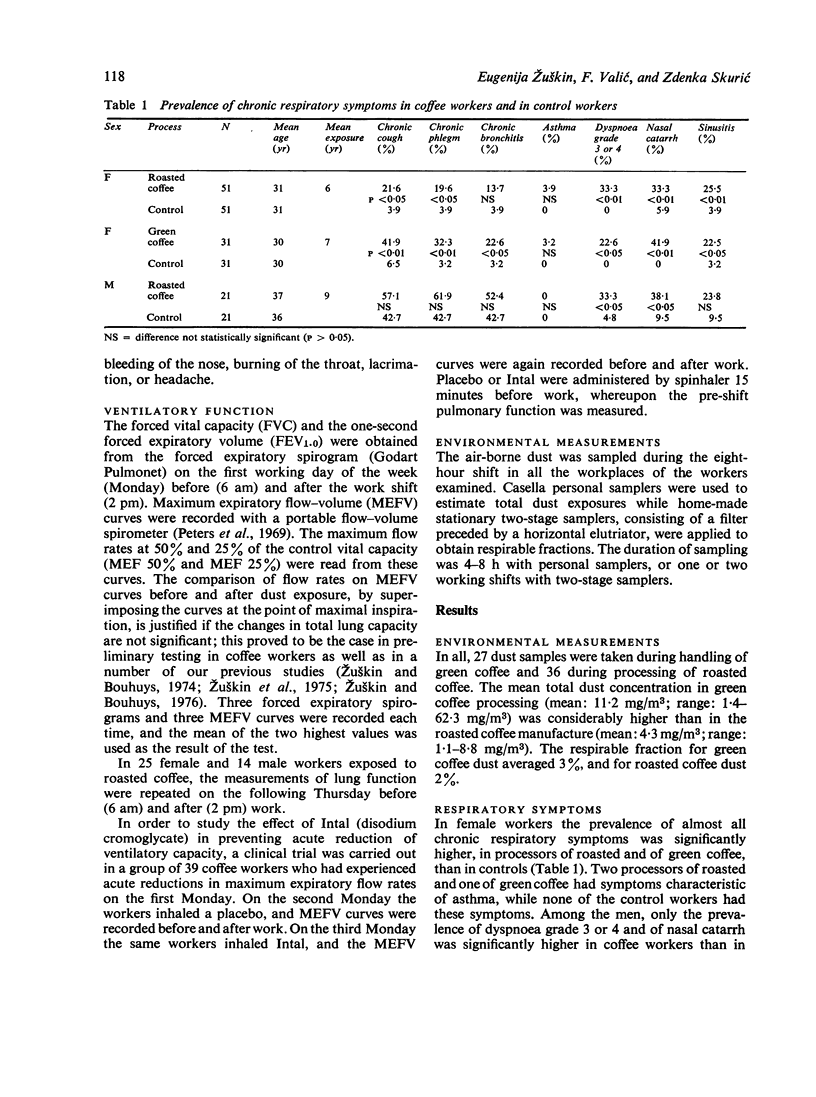
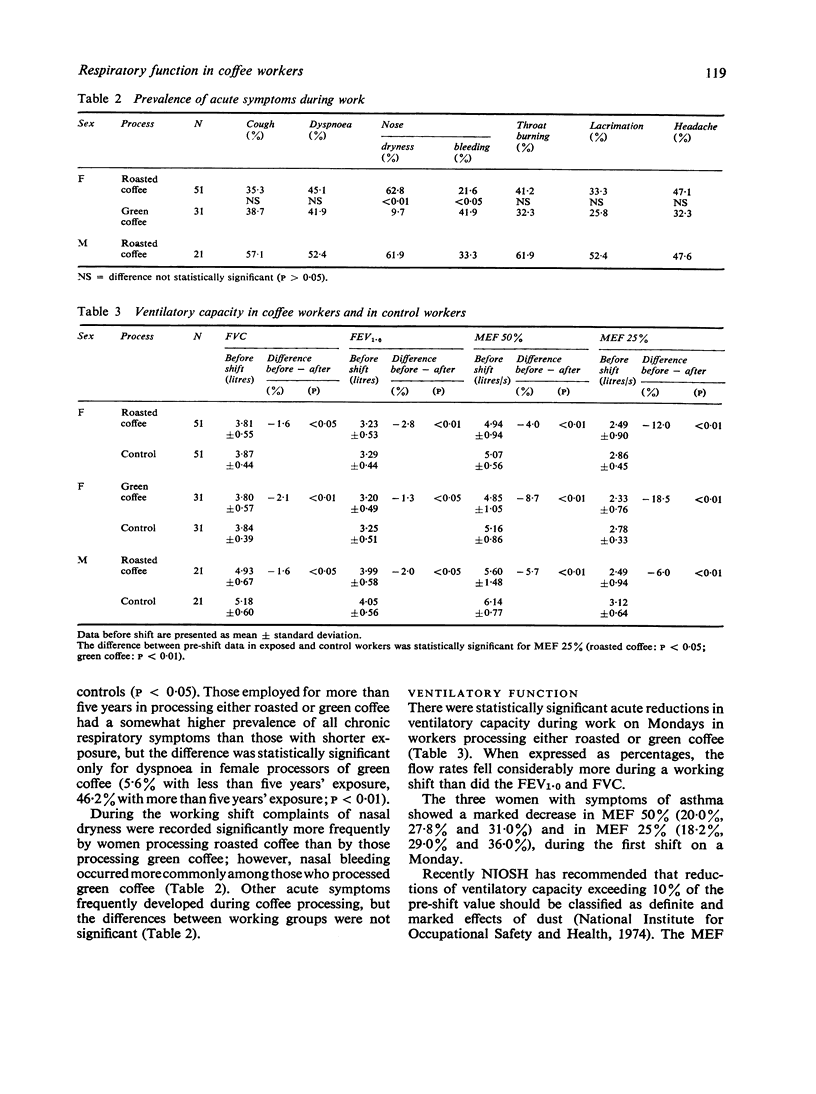
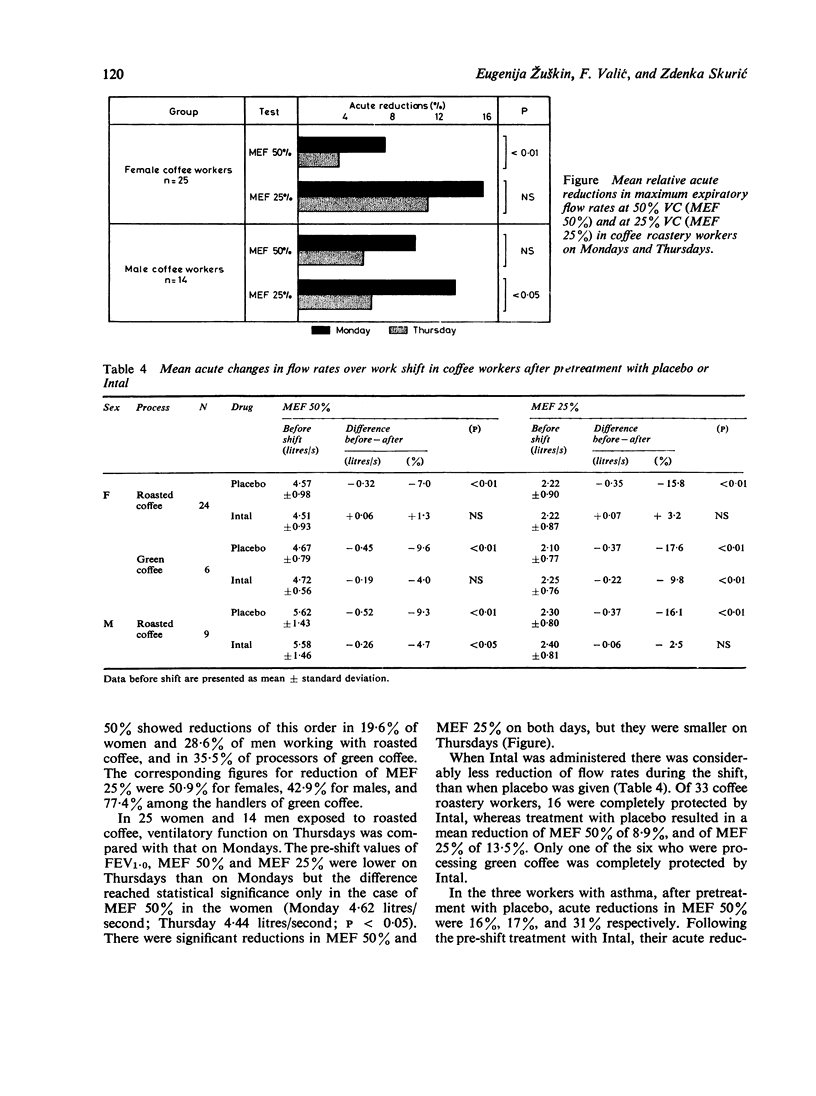
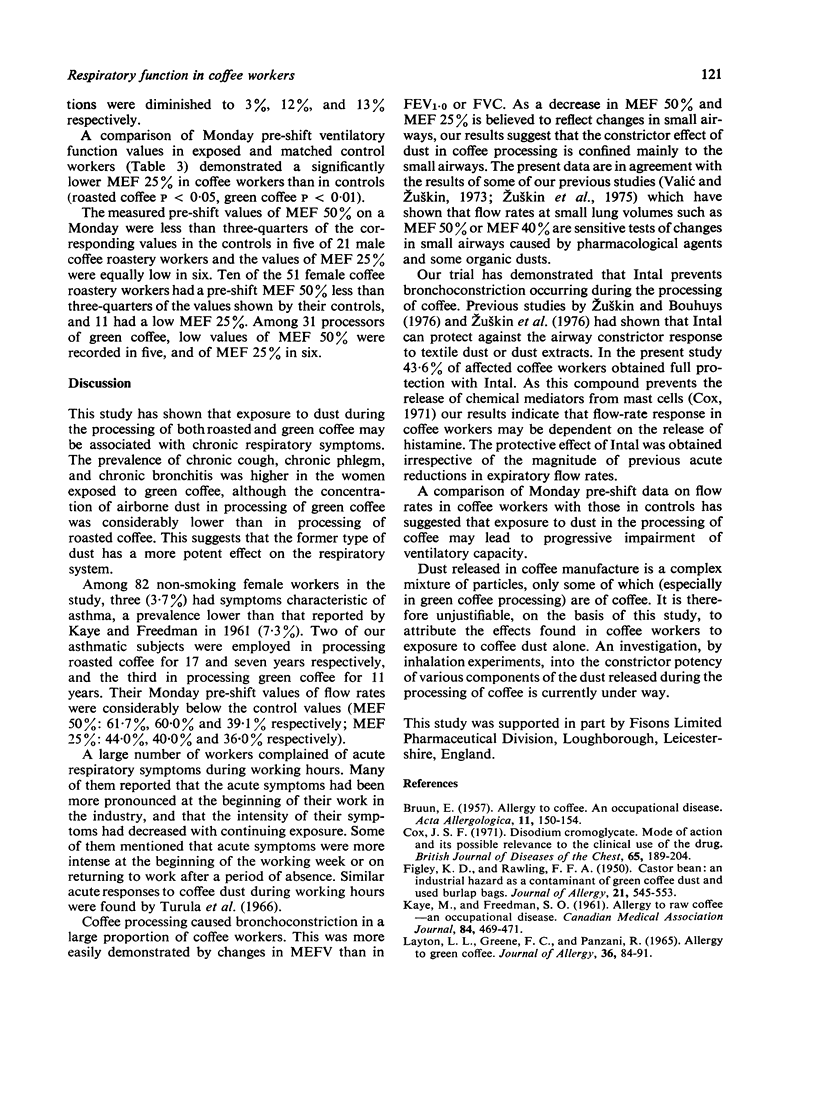
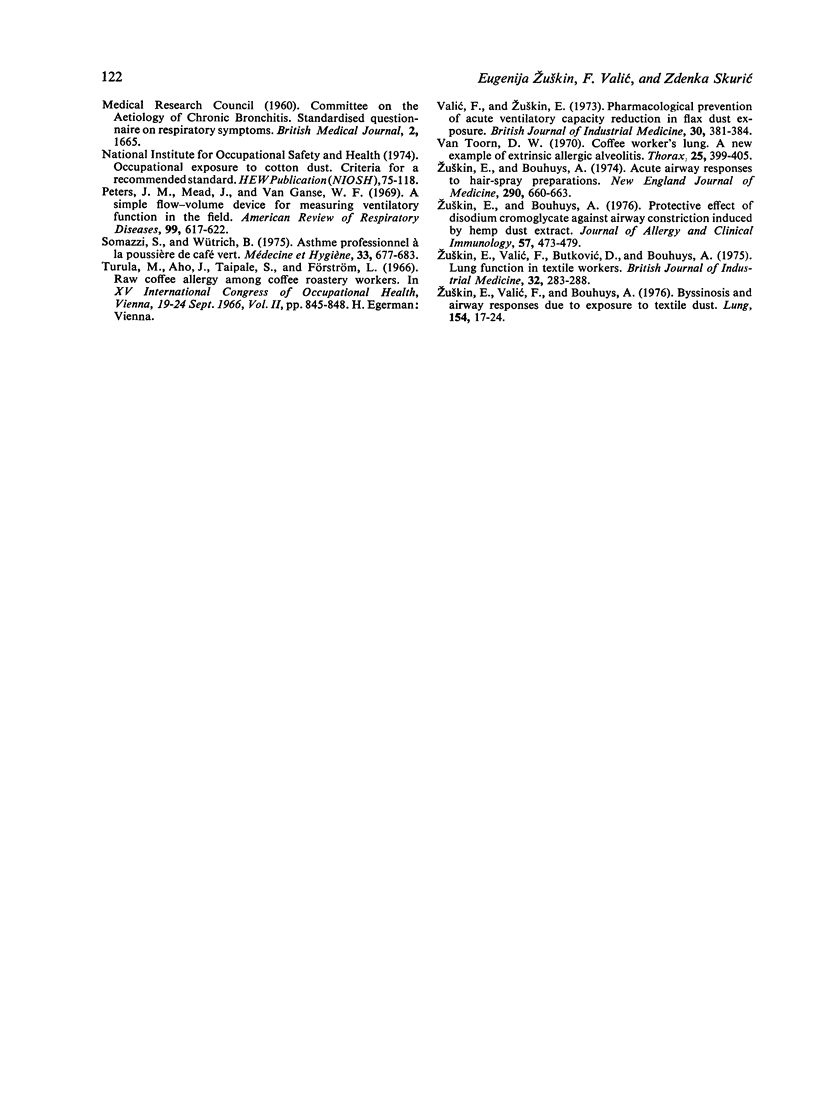
Selected References
These references are in PubMed. This may not be the complete list of references from this article.
- BRUUN E. Allergy to coffee; an occupational disease. Acta Allergol. 1957;11(2):150–154. [PubMed] [Google Scholar]
- Cox J. S. Disodium cromoglycate. Mode of action and its possible relevance to the clinical use of the drug. Br J Dis Chest. 1971 Oct;65(4):189–204. doi: 10.1016/0007-0971(71)90028-3. [DOI] [PubMed] [Google Scholar]
- FIGLEY K. D., RAWLING F. F. A. Castor bean: an industrial hazard as a contaminant of green coffee dust and used burlap bags. J Allergy. 1950 Nov;21(6):545–553. doi: 10.1016/0021-8707(50)90106-7. [DOI] [PubMed] [Google Scholar]
- KAYE M., FREEDMAN S. O. Allergy to raw coffee-an occupational disease. Can Med Assoc J. 1961 Mar 4;84:469–471. [PMC free article] [PubMed] [Google Scholar]
- LAYTON L. L., GREENE F. C., PANZANI R. ALLERGY TO GREEN COFFEE. FAILURE OF PATIENTS ALLERGIC TO GREEN COFFEE TO REACT TO CHLOROGENIC ACID, ROASTED COFFEE, OR ORANGE. J Allergy. 1965 Jan-Feb;36:84–91. doi: 10.1016/0021-8707(65)90035-3. [DOI] [PubMed] [Google Scholar]
- Peters J. M., Mead J., Van Ganse W. F. A simple flow-volume device for measuring ventilatory function in the field. Results on workers exposed to low levels of toluene diisocyanate. Am Rev Respir Dis. 1969 Apr;99(4):617–622. doi: 10.1164/arrd.1969.99.4P1.617. [DOI] [PubMed] [Google Scholar]
- Zuskin E., Bouhuys A. Acute airway responses to hair-spray preparations. N Engl J Med. 1974 Mar 21;290(12):660–663. doi: 10.1056/NEJM197403212901205. [DOI] [PubMed] [Google Scholar]
- Zuskin E., Bouhuys A. Protective effect of disodium cromoglycate against airway constriction induced by hemp dust extract. J Allergy Clin Immunol. 1976 May;57(5):473–479. doi: 10.1016/0091-6749(76)90063-4. [DOI] [PubMed] [Google Scholar]
- Zuskin E., Valic F., Bouhuys A. Byssinosis and airway responses due to exposure to textile dust. Lung. 1976 Dec 29;154(1):17–24. doi: 10.1007/BF02713515. [DOI] [PubMed] [Google Scholar]
- Zuskin E., Valić F., Butković D., Bouhuys A. Lung function in textile workers. Br J Ind Med. 1975 Nov;32(4):283–288. doi: 10.1136/oem.32.4.283. [DOI] [PMC free article] [PubMed] [Google Scholar]
- van Toorn D. W. Coffee worker's lung. A new example of extrinsic allergic alveolitis. Thorax. 1970 Jul;25(4):399–405. doi: 10.1136/thx.25.4.399. [DOI] [PMC free article] [PubMed] [Google Scholar]


